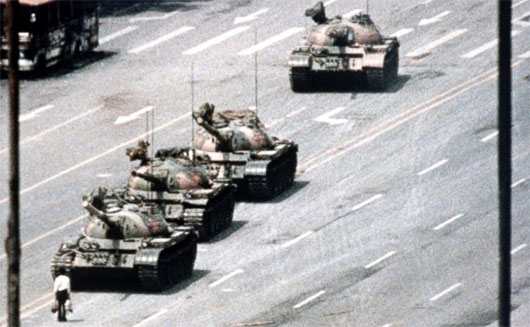Special to WorldTribune.com
UNITED NATIONS — We all remember where we were when the Tiananmen Square crackdown occurred. I recall a Friday evening episode of the TV program “Dallas” being interrupted as the news switched live to Beijing. Moments later Chinese police forced their way into the CBS News transmission trailer and shut down the broadcast.
The Tiananmen Square demonstrations in the heart of the Chinese capital were ending in a chaotic bloodbath. Hundreds if not a few thousand unarmed pro-democracy protesters were killed that bloody night in Beijing. The world watched in horror as the comfortable stereotypes of a “changed China” were suddenly smashed as China was brutally thrust back to the sanguinary Maoist era, all on live TV.

A BBC news report spoke of “unremitting gunfire” and the “savagery of the situation.” The image of” Tank Man”, the fellow who bravely stood before and stopped the column of tanks remains an iconic epitaph.
Recall that Tiananmen was not a singular event but the bloody climax of an evolving six-week process of demonstrations and discussions, bitter debate inside the communist party, until the final military crackdown. Initially the protests were not “pro-democracy” but “anti-corruption” against the hopelessly geriatric and corrupt Chinese Communist Party (CCP). The images of the Goddess of Democracy and anti-communist protests we recall came later as the students became radicalized after being shunned, spurned and then shot by their government.
But troops and police from Beijing were assumed to be fraternizing with and too friendly to their fellow Chinese as to fire upon them on command. Thus, the regime rotated garrisons from rural areas into the capital to come teach the students a tough lesson. As with the Hungarian Revolution in 1956, what initially appeared to be a Soviet pullback, was actually a foreboding lull before a massive counterattack by loyal untainted forces.
The sequence vividly portrayed the inherent rigidity of the CCP as well as its willingness to use brutal force to enforce its control.
Western moods swung from revulsion over the bloody events to a rationalization that a reforming China would still somehow go “our way” towards becoming an open society with free markets.
Indeed, the economy has been booming but exhibits the hallmarks of crony capitalism or less politely, the corporate state.
But as June 1989 turned to Summer and then Autumn, some Western countries offered tough rhetorical rebukes to the Beijing regime at the UN General Assembly session but at the same time balanced their moral revolution with realpolitik.
Yet given its haunting paranoia over the June 4th pro-democracy protests, China’s Orwellian propaganda apparat has largely airbrushed Tiananmen from contemporary history; officially it never happened.
Back during Tiananmen news spread fast. Foreign TV crews encamped on the huge plaza for weeks, and FAX machines, the newest and fastest way to speed information, were commonplace. People were watching worldwide, the CCP, after bitter internal infighting, solved the problem the old-fashioned way and sent in the tanks. Premier Li Peng’s hardliners triumphed on that day.
Yet censoring Tiananmen’s bloody memories out of the population’s consciousness was due less to the regime’s propaganda as much as the government’s overdue focus on socio/economic reforms. Despite the CCP’s authoritarian credentials, the government has delivered on its economic promises and lifted a huge number of people out of abject poverty. As importantly reforms created a middle class which was unimaginable even in 1989. Yes, the cost has been massive pollution, environmental degradation and human rights dystopia but China is no longer the poor country it once was.
In a sense, after Tiananmen’s horror, the Deng Xiaoping regime and subsequent rulers bought off the Chinese people with a better lifestyle and opportunities at the cost of political freedom.
Consider for a moment the two-way trade between the U.S. and China in 1989 and contrast it with the current numbers. Back in 1989 bilateral trade with China was $18 billion in which the U.S. ran a $6.2 billion deficit with China. In 2018, two-way trade reached $659 billion, the U.S. running a $419 billion deficit with the People’s Republic!
But Washington’s political ties with Beijing since Tiananmen have never been quite the same. The false optimism over China policy in general, shared by both Democrat and Republican Administrations always faces new surprises and old challenges.
Chairman Xi Jinping’s current rule has redoubled political repression and pulled the oxygen out of spirited debate. Tiananmen’s story may be taboo but its ghosts remain; we must remember, not rationalize that day in June.
John J. Metzler is a United Nations correspondent covering diplomatic and defense issues. He is the author of Divided Dynamism the Diplomacy of Separated Nations: Germany, Korea, China (2014). [See pre-2011 Archives]

 By
By